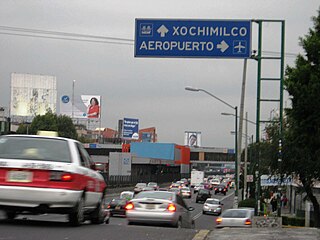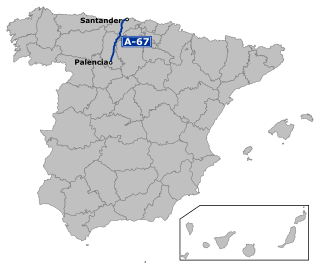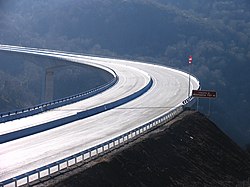
Benito Juárez, is a borough in Mexico City. It is a largely residential area, located to the south of historic center of Mexico City, although there are pressures for areas to convert to commercial use. It was named after Benito Juárez, president in the 19th century.

Iztacalco is a borough in Mexico City. It is located in the central-eastern area and it is the smallest of the city's boroughs. The area's history began in 1309 when the island of Iztacalco, in what was Lake Texcoco, was settled in 1309 by the Mexica who would later found Tenochtitlan, according to the Codex Xolotl. The island community would remain small and isolated through the colonial period, but drainage projects in the Valley of Mexico dried up the lake around it. The area was transformed into a maze of small communities, artificial islands called chinampas and solid farmland divided by canals up until the first half of the 20th century. Politically, the area has been reorganized several times, being first incorporated in 1862 and the modern borough coming into existence in 1929. Today, all of the canals and farmland are dried out and urbanized as the most densely populated borough and the second most industrialized.

Viaducto is a station on Line 2 of the Mexico City Metro system. It is located in the border of Benito Juárez and Iztacalco boroughs of Mexico City, south of the city centre on Calzada de Tlalpan. It is a surface station.

A cantilever spar cable-stayed bridge is a modern variation of the cable-stayed bridge. This design has been pioneered by the structural engineer Santiago Calatrava in 1992 with the Puente del Alamillo in Seville, Spain. In two of his designs the force distribution does not depend solely upon the cantilever action of the spar (pylon); the angle of the spar away from the bridge and the weight distribution in the spar serve to reduce the overturning forces applied to the footing of the spar. In contrast, in his swinging Puente de la Mujer design (2002), the spar reaches toward the cable supported deck and is counterbalanced by a structural tail. In the Assut de l'Or Bridge (2008), the curved backward pylon is back-stayed to concrete counterweights.
Cintra, S.A. is one of the largest private developers of transport infrastructure in the world. Its assets are fundamentally toll roads and car parks, in which it has a total investment of €16billion. Formerly traded on the Madrid Stock Exchange and part of the Spanish benchmark IBEX 35 stock index, Cintra was reacquired by its former owner Ferrovial in December 2009.

The César Gaviria Trujillo Viaduct is a cable-stayed bridge connecting the neighbouring cities of Pereira and Dosquebradas in Risaralda, Colombia. It is one of the longest cable-stayed bridges in South America and, at the time of its completion in 1997, ranked 20th in the world.

Ferrovial, S.A., previously Grupo Ferrovial, is a Spanish multinational company that operates in the infrastructure sector for transportation and mobility with four divisions: Highways, Airports, Construction, and Mobility and Energy Infrastructure. The Highway sector develops, finances, and operates tolls on highways such as the 407 ETR, the North Tarrant Express, the LBJ Express, Euroscut Azores, I-66, I-77, NTE35W, and Ausol I. The Airports sector operates at Heathrow, Glasgow, Aberdeen, and Southampton. The Construction business designs and carries out public and private works such as roads, highways, airports, and buildings. The Mobility and Energy Infrastructure Department is responsible for managing renewable energy, sustainable mobility, and circular economy projects. Ferrovial is present in more than 20 countries where its business lines operate.

The Malleco Viaduct is a railway bridge located in central Chile, passing over the Malleco River valley, south of Collipulli in the Araucania Region. It was opened by President José Manuel Balmaceda on October 26, 1890. At that time, it was the highest such bridge in the world. The Panamerican Highway passes right next to the viaduct.

The Autovía A-67 is a highway in north west Spain. It connects the Cantabrian Atlantic Coast at Santander to Palencia. It follows the route of the N-611.

The Anillo Periférico is the outer beltway of Mexico City.

Colonia Algarín is a very small working class residential neighborhood located south of the historic center of Mexico City. Its border to the north is Eje 3 Sur José Peón Contreras, to the south Viaducto Miguel Alemán, to the east San Antonio Abad Ave and to the west Eje Central Lázaro Cárdenas. Colonia Algarín is located between colonias Buenos Aires, Álamos (Viaducto), Obrera and Asturias. On the south border, alongside Viaducto Miguel Alemán, flows the Río de la Piedad. This river, just as in the case as many other rivers of the city, is encased in cement.

National Primary Route 32, or just Route 32 is a National Road Route of Costa Rica, located in the San José, Heredia, Limón provinces. It connects the central valley and Greater Metropolitan Area to the Caribbean coast of the country.













